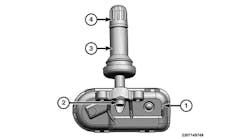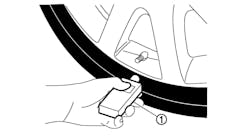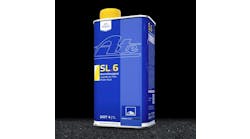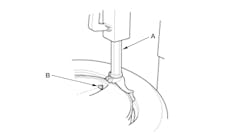The turn toward warmer weather historically has signaled the start of air conditioning repair season in automotive service bays.
But the growing complexity of vehicles is turning the traditional summertime A/C service into a year-round service opportunity — with growing complexity.
Andy Fiffick has been keeping cars cool for 48 years and he no longer refers to it as “A/C service.”
Fiffick is the founder and CEO of Rad Air Complete Car Care and Tire Centers, a 10-store franchise with locations in northeast Ohio.
He prefers to refer to this work as “HVAC service” and says the term is becoming more prevalent, especially as electric and hybrid vehicles add layers of difficulty to the traditional cooling system.
“It’s all encompassing - not only heating and cooling the cabin for the client, but we’re heating and cooling the batteries.
“Some systems have three separate loops,” he says, noting he attended a recent three-hour training clinic focused on the new Jeep Wagoneer and its four-zone system with 14 control motors.
All 14 of those motors have one wire that controls them, says Fiffick. When that wire breaks, anything after the break won’t work.
“A/C repairs can be very profitable as an add-on service for any shop, but it’s not for the faint of heart. You need to be committed to performing these services correctly and that takes a commitment to training.”
It’s also a financial commitment in equipment and supplies. In addition to designated recovery recycle recharge (RRR) machines for both R-134a and R-1234yf refrigerants, there are refrigerant and sealer identifiers, leak detectors, oil injectors and some special refrigerant tools needed.
Altogether, it’s an investment in the range of $15,000 to $20,000 to offer a full range of HVAC repairs, he says.
On top of that, Fiffick says technicians need to be high-level and well trained in electronics, heat transfer, thermal dynamics, mechanical operations and various communications systems. Those technicians need to know how to operate bi-directional scanners and scopes to properly diagnose, repair and re-learn the high-tech systems in modern vehicles.
The physics and thermodynamics of these systems aren’t changing. “What’s been changing is the electronics - the way the systems operate.”
Adding to that, Fiffick says well-trained technicians must have a “delicate touch” to remove and replace the dashboard assemblies to access the HVAC box and its evaporators, blower motors and controls.
“This takes an incredibly special and talented technician.”
He doesn’t want to dissuade anyone from doing the work, but says long gone are the days where technicians spent their time charging air conditioners to help drivers endure another hot summer.
Fiffick says the molecular structure of the new R-1234yf refrigerant is much smaller than R-134a, which means it leaks faster.
Most systems take a pound or less of refrigerant. If a minor leak results in losing about a third of that, “you start affecting performance severely.”
And it’s not easy to find that leak. Old machines used to mix the oil and refrigerant together, so an oil stain was a clue as to the location of the leak. Fiffick says new systems keep the oil from circulating.
He notes there are resources to help and train technicians. He’s a longtime member of MACS, the Mobile Air Climate Systems Association, and is the current chairman of the group’s board. In addition to other training opportunities and refrigerant certification, MACS publishes a monthly service report with updates.
“I remember when TPMS sensors came on. We had to reprogram all of them. We learned that. We got through it and now they pretty much all program themselves. That’s the one constant in our industry – we’re always changing.”
Bill Snow, vice president of marketing and franchise development for Rad Air, says given the complexity of vehicle cooling systems, service advisors need to know how to talk to their customers about these repairs.
“Sometimes (they) will have a client standing in front of them that is an engineer (who) wants to know how it works.
“We have a really nice graphic that we keep in our client reception area, where a service manager or (service) writer could point to and explain it.
“And then there are other customers who say, ‘I need it to work. Just tell me what you’re going to do. Tell me the price. Tell me the warranty and tell me when it will be done.’
“At the end of the day, it’s a closed system,” says Snow. “It shouldn’t leak. There’s mechanical components, there’s refrigerant components, there’s electrical components. The problem exists with at least one of those. When you explain it that way, it simplifies it a bit and sets the expectation.”





